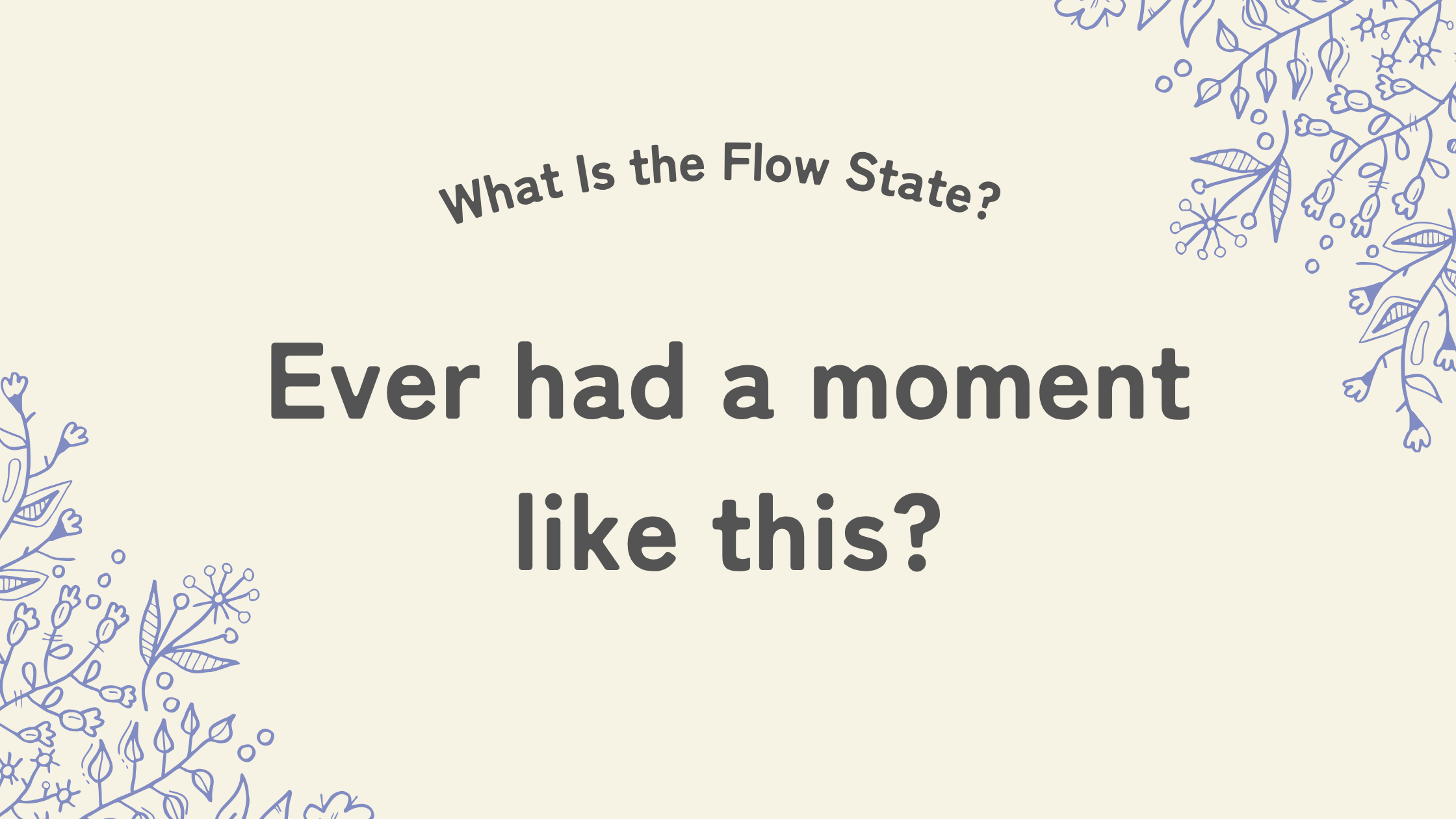Have You Ever Been So Immersed That You Lost Track of Time?
Whether it’s during work, study, or a creative hobby, many of us have experienced moments when we are so deeply focused that hours seem to fly by. In psychology, this powerful mental state is known as the flow state or simply “flow.”
In this article, you’ll learn:
- What the flow state is
- Its key characteristics
- Real-life examples
- The psychological and practical benefits
- How to enter the flow state more easily
- And recommended books and sources to explore further
What Is the Flow State? A Psychological Perspective
The term flow was introduced by psychologist Mihaly Csikszentmihalyi, who defined it as a state of optimal experience in which a person is fully immersed in an activity, with a high level of focus and enjoyment.
Core Characteristics of Flow (Csikszentmihalyi, 1990)
- Intense concentration on the task
- Merging of action and awareness
- Loss of self-consciousness
- Distorted sense of time (time seems to fly or slow down)
- The activity is intrinsically rewarding
- Clear goals and sense of direction
- Immediate feedback
- Balance between challenge and skill level
Examples of Flow in Everyday Life
The flow state can occur in various fields and activities:
- A musician completely absorbed in a live performance
- An athlete “in the zone” during a match
- A programmer deeply focused on coding
- A writer or artist creating without distraction
- A student studying for hours without noticing the clock
The Benefits of Entering Flow
Flow is not only enjoyable—it also boosts real-world performance and well-being.
Key Benefits:
- Enhanced focus and productivity
- Increased creativity and problem-solving ability
- Greater intrinsic motivation
- Higher levels of happiness and satisfaction
- Accelerated skill development and learning
According to Csikszentmihalyi, flow is one of the most important sources of true happiness in life.
How to Enter the Flow State
To increase the chances of experiencing flow, researchers highlight the following conditions:
- Clear goals – Know what you want to achieve
- Immediate feedback – Understand your progress instantly
- Challenge-skill balance – The task should match your current skill level: not too hard, not too easy
In addition, eliminating distractions—like turning off notifications or blocking out noise—can help you concentrate more effectively.
Recommended Reading & References
Want to go deeper into the psychology of flow? These sources are a great place to start:
- Csikszentmihalyi, M. (1990). Flow: The Psychology of Optimal Experience. Harper & Row.
- Csikszentmihalyi, M. (2016). Flow: The Psychology of Happiness. Rider (UK edition)
- Nakamura, J., & Csikszentmihalyi, M. (2002). The Concept of Flow. In Handbook of Positive Psychology, Oxford University Press.
Partially Referenced Work
・Motegi, Kenichiro. 「緊張を味方につける脳科学」(The Neuroscience of Turning Nervousness into an Ally.) Kawade Shinsho, 2021.
Conclusion: Flow Can Transform Your Everyday Life
The flow state is more than just a buzzword—it’s a scientifically supported concept that can help you live a more engaged, productive, and fulfilling life.
By identifying the tasks that naturally draw your attention and removing distractions, you can enter flow more frequently—and begin to harness its full potential.
📢 Coming Soon:
In our next post, we’ll share how to achieve flow at work—even during boring or repetitive tasks.
Follow us on X (formerly Twitter) for updates → [@youyou _school]

Wanna focus, meow!



